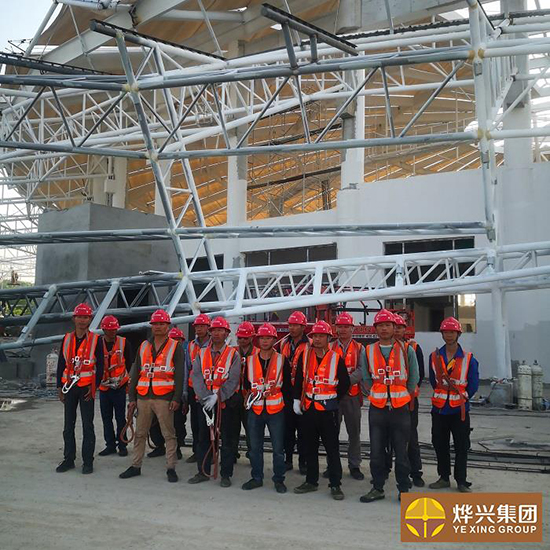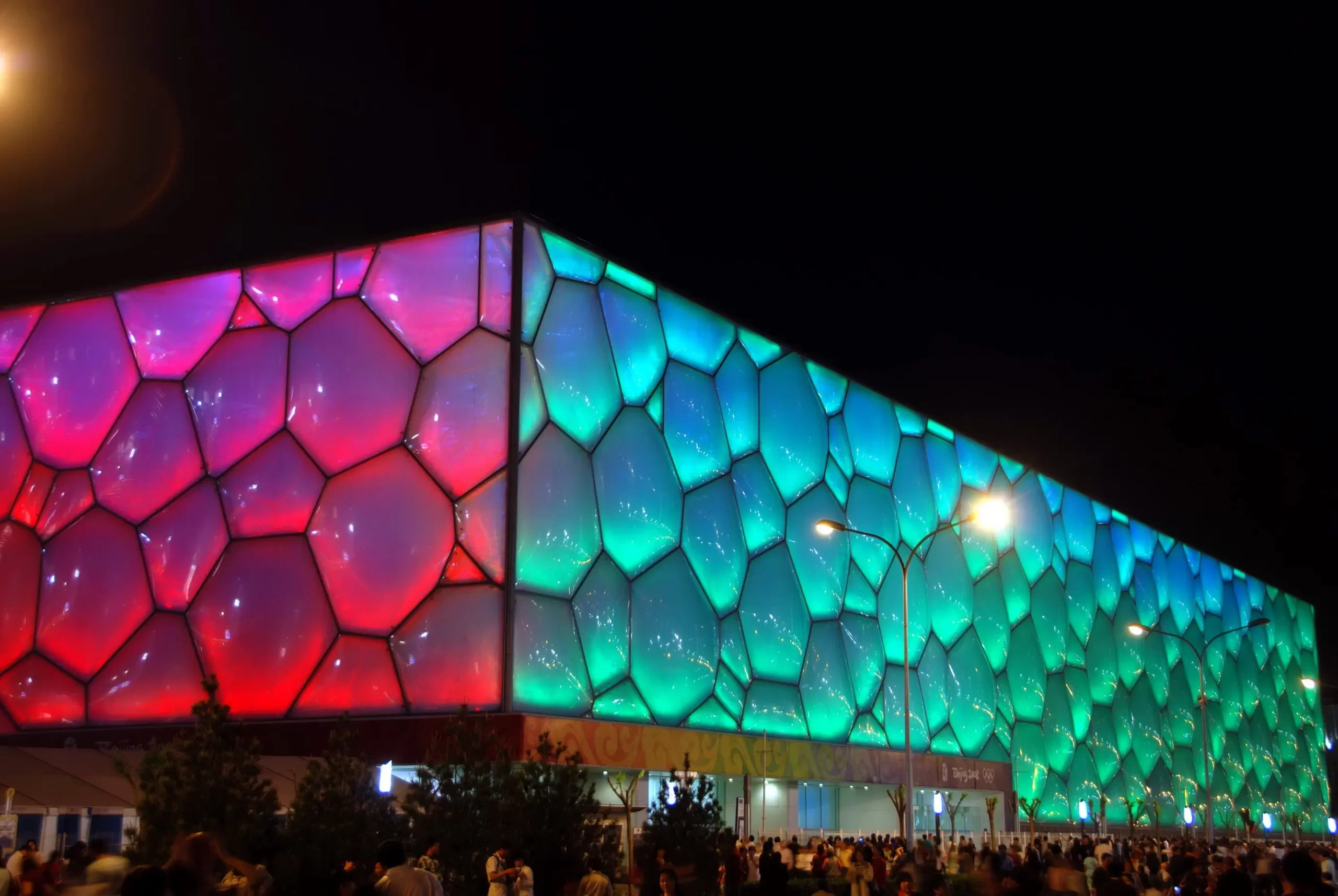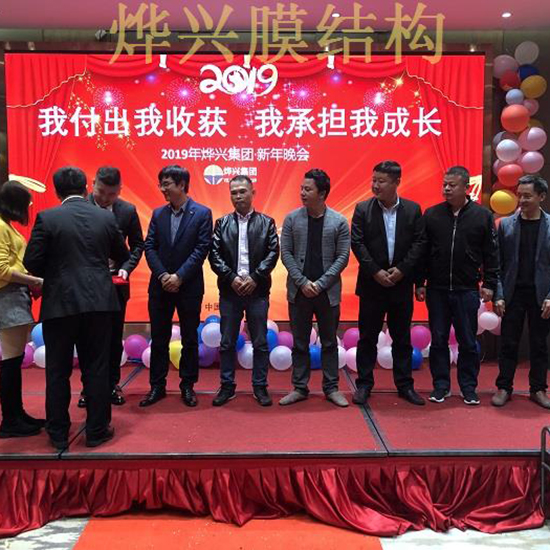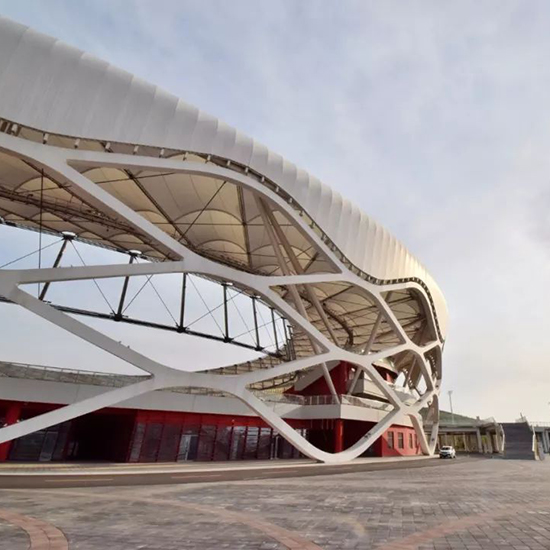ENCN
Home / How is the ETFE membrane structure classified?
How is the ETFE membrane structure classified?
When receiving customer inquiries daily, I encountered many customers asking “how is the ETFE membrane structure classified”, today we will give an entry-level introduction, let’s take a look.

First of all, the thickness of the membrane material is used to distinguish the ETFE membrane structure. ETFE membranes for construction are conventionally 100 μm, 150 μm, 200 μm, 250 μm, 300 μm thick, and the thickest is 500 μm. ETFE film is currently the strongest fluoroplastic, and its chemical composition is ethylene-polyvinyl fluoride copolymer. The physical properties of ETFE membranes with different thicknesses are different. Generally, the single-layer membrane roof adopts 250μm-300μm, and when it is made into an inflatable air pillow membrane, the outermost layer uses 200μm-250μm, and the middle layer of the air pillow uses 100μm-150μm. It should be noted that when the thickness exceeds 500 μm, the mechanical strength of the ETFE membrane will increase, but the flexibility will decrease, so it is not the thicker the better, just meet the design requirements.

Secondly, from the structural form, the ETFE membrane structure can be classified into two categories: single-layer ETFE membrane and double (multi-layer) air pillow membrane. They all need to be supported and fixed by special aluminum alloy brackets, and the membrane-forming units are divided according to certain rules. The appearance of the single-layer ETFE membrane is relatively simple, and it looks similar to glass; the double (multi-layer) air pillow membrane needs to be inflated intelligently with a professional inflation system to keep the membrane air pillow bulging, so as to obtain a three-dimensional bubble beauty and good heat preservation insulation performance. ETFE air pillow membrane is one of the latest and dazzling roofing forms, and each work has become a city landmark that attracts passenger flow. It should be noted that once the ETFE air pillow membrane roof is put into use, the inflatable equipment must be kept running stably to ensure that the air pressure in the air pillow is within the design requirements.

The last is the color of the ETFE membrane material. The conventional ones are colorless and transparent, light blue, milky white, transparent with pattern plating, etc. In terms of the color of the membrane material, it is generally selected according to the effect pursued by the project. Colorless, transparent, light blue, milky white, etc., are all pure colors, and their light transmittance and other properties are relatively fixed. Here we mainly talk about the most widely used transparent plus pattern coating film. The purpose of adding pattern plating points on the transparent film is to adjust the sunlight passing rate and make the lighting environment under the roof more comfortable and pleasant. The shape, size, arrangement interval, etc. of the plated pattern can be customized, and the manufacturer also provides a variety of conventional options in stock. Although coating points are added to the membrane, when the roof is more than 10 meters above the ground, the coating point roof looks almost transparent visually.

The above is the content of “How is ETFE membrane structure classified?” If you want to know more about ETFE membrane structure, please add our official WhatsApp: +86-13923448766, or send an email to our official email: yexing@yexinggroup. com. We will provide you with free consulting services 24 hours a day. We, Yexing, have been focusing on making membrane structures for 18 years. Here, the editor would like to remind everyone: choose Yexing for membrane structures, the project quality is reliable, and it is safe and worry-free.
How is the ETFE membrane structure classified?
Recent News
-
Yexing-Jingshan tennis membrane structure project on CCTV-5
-
How to cut and connect the film material?
-
The ETFE membrane structure project department of Yexing-Guigang high-speed railway station fired the first shot of resumption of work after the holiday
-
Zaozhuang Stadium won the 2020 Oscar in the global architecture industry




